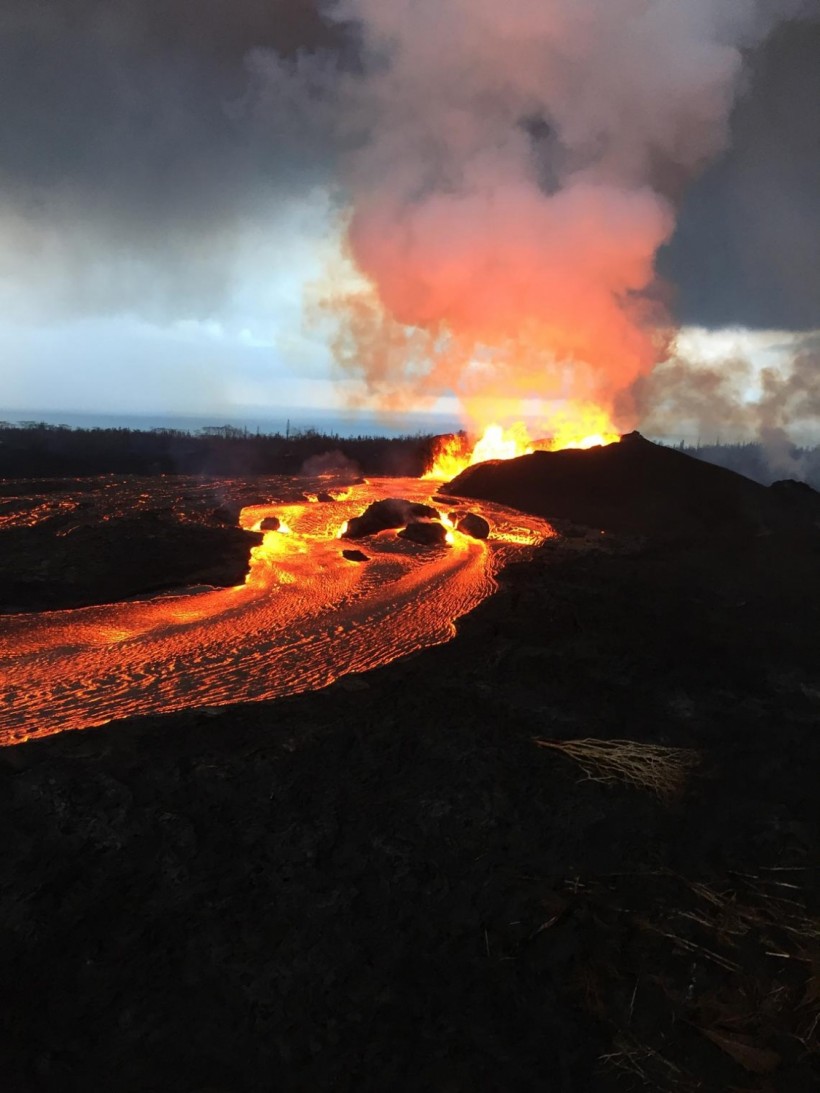The 2018 Kilauea eruption in Hawaii was triggered by heavy rainfall, according to a study published in Nature.
Kilauea volcano erupted on May 3, 2018, when the volcanic rock that covered the volcano's chamber softened and cracked. This opened its magmatic chamber, where magma flowed out at multiple fissures along the East Rift Zone, according to the Daily Mail.
Dr. Jamie Farquharson from the Rosenstiel School of Marine and Atmospheric Science, University of Miami, said, "Interestingly, when we investigate Kīlauea's historical eruption record, we see that magmatic intrusions and recorded eruptions are almost twice as likely to occur during the wettest parts of the year."
Coupled with record rainfall, Kilauea erupted for seven months. The eruption almost completely subsided in August, which officially ended on December 5, three months after Kilauea became inactive.
Kilauea shot incandescent lava as high as 200 feet in the air and spewed it for over 13 square miles across the east coast. Toxic sulfur dioxide was present in the area, making it difficult to navigate for the first responders. Heat melted power lines off poles and lava flowed through the woods and roads.
Researchers fear increased rainfall will make eruptions more intense in the future. Dr. Farquharson said, "If we can identify regions of the globe where this kind of coupling between rainfall and volcanism exists, it could go a long way towards advanced warning of associated volcanic hazards."
The eruption that destroyed more than 600 homes and forced over 2,000 residents to evacuate may happen again because of rain.
Changing times
Climate change is melting the ice caps in Iceland, increasing the chances of a volcanic eruption/s. It is also changing rainfall patterns that can affect volcanic activity in the future.
"As ongoing climate change is predicted to bring about changes in rainfall patterns, we expect that this may similarly influence patterns of volcanic activity," Dr. Farquharson said.
Other countries, especially those in the Pacific Ring of Fire, must also monitor their rain levels because it also affects other natural phenomena.
Falk Amelung, a professor from the University of Miami and co-author of the study, said, "We knew that changes in the water content in the Earth's subsurface can trigger earthquakes and landslides."
Deeper understanding
According to the Daily Mail, the researchers modeled the fluid pressure within the edifice of Kilauea. They used "Earth-observing satellites and precipitation information from NASA and the Japanese Space Exploration Agency, as well as ground deformation observations from the European Space Agency."
Fluid pressure directly influences mechanical failure in the subsurface or the magmatic chamber of the volcano. This causes an eruption to occur.
"An eruption happens when the pressure in the magma chamber is high enough to break the surrounding rock and the magma travels to the surface," said Amelung.
Before the eruption, Kilauea had the highest fluid pressure in almost half a century. It also caused magma to move below the volcano, which is the first time fluid pressure is used to explain the magmatic process.
Dr. Farquharson added, "Having established the evidence for rainfall-triggered eruptions at Kīlauea, it will be fascinating to investigate other volcanoes."















